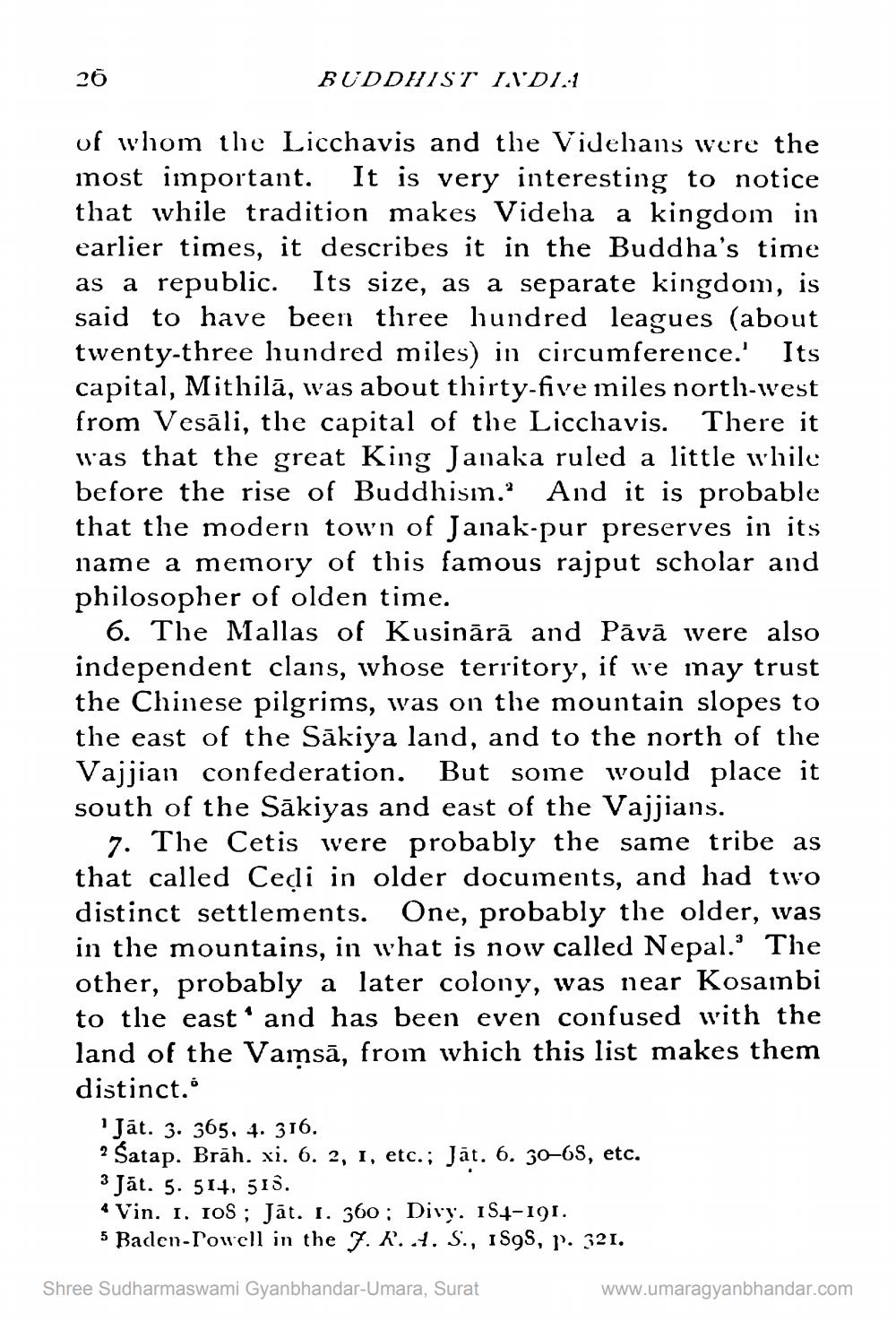________________
26
BUDDHIST INDIA
of whom the Licchavis and the Videhans were the most important. It is very interesting to notice that while tradition makes Videha a kingdom in earlier times, it describes it in the Buddha's time as a republic. Its size, as a separate kingdom, is said to have been three hundred leagues (about twenty-three hundred miles) in circumference.' Its capital, Mithilā, was about thirty-five miles north-west from Vesāli, the capital of the Licchavis. There it was that the great King Janaka ruled a little while before the rise of Buddhism." And it is probable that the modern town of Janak-pur preserves in its name a memory of this famous rajput scholar and philosopher of olden time.
6. The Mallas of Kusinārā and Pāvā were also independent clans, whose territory, if we may trust the Chinese pilgrims, was on the mountain slopes to the east of the Sākiya land, and to the north of the Vajjian confederation. But some would place it south of the Sākiyas and east of the Vajjians.
7. The Cetis were probably the same tribe as that called Cedi in older documents, and had two distinct settlements. One, probably the older, was in the mountains, in what is now called Nepal.' The other, probably a later colony, was near Kosambi to the east' and has been even confused with the land of the Vamsa, from which this list makes them distinct."
'Jat. 3. 365, 4. 316.
2
Śatap. Brāh. xi. 6. 2, 1, etc.; Jat. 6. 30-68, etc. 3 Jāt. 5. 514, 518.
4 Vin. I. IOS; Jat. 1. 360; Divy. 184-191.
5 Baden-Powell in the J. R. A. S., 1898, p. 321.
Shree Sudharmaswami Gyanbhandar-Umara, Surat
www.umaragyanbhandar.com




